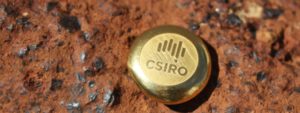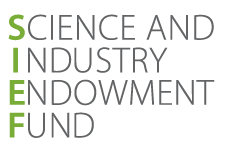Cyanide Free, Non-Toxic Gold Recovery (Going for Gold) Case Study
SIEF supports a demonstration plant to validate new products for gold recovery (Going for Gold).
The challenge
Gold mining industry faces a lot of environmental, economical and regulatory challenges. In the large-scale industry, toxic cyanide is often used to recover gold from the earth. Small mining firms typically do not use cyanide, but their gold recovery practices are far less efficient, with miners losing up to half of the gold that they mine. The infrastructure for a processing plant that uses cyanidation typically costs $30 million, and is therefore, a barrier to entry for gold miners with smaller gold deposits that do not fit into the large-scale economies of gold production.
As a whole, the industry faces challenges with processing gold using the conventional ‘cyanidation’ technique that include safety, stringent regulatory approvals, cost-effectiveness, resource sizing, transportation costs and other environmental constraints. In addition there is a risk that within the next few years many countries will ban cyanide in gold production. It has already been banned in some states in the USA and parts of Europe.
The response
The SIEF Experimental Development Program (EDP) will support the development of market-ready, proprietary, cost-effective, non-toxic and environmentally-friendly gold recovery products. The team is working towards maximising the gold recovery through developing gold extraction reagents that don’t cost the Earth, but allow opening up low grade, uneconomic or stranded deposits. The range of leach reagents that are being developed are far less toxic than cyanide, safer to handle, have a lower environmental risk and can be effectively used with a range of ores.
CSIRO has been developing a safer process through use of an alternative reagent known as thiosulphate to recover gold which offers opportunities for additional gold recovery where cyanide is not an option and as an alternative to the use of mercury. Thiosulphate dissolves the fine gold out of ores (the gold that is not recovered by gravity methods) at similar rates to conventional techniques. It is safe and lowers environmental and financial footprint of the gold mining.

A gold ingot produced from the first gold extracted by the demonstration plant (Source: CSIRO).
The method has undergone intensive testing in the laboratory to understand its leaching performance in association with reagent recovery and recycle. Results indicate it can be applied to a range of ore types as opposed to only specific ones.
With the potential stringency in regulatory approvals and reporting requirements associated with the use of cyanide, the proposed solutions will create process flexibility and increase options to access a wider range of deposits while supporting smaller gold miners.
SIEF funds will support the construction and operation of a mobile pilot plant that will demonstrate recovery of gold using the non-toxic products from various gold ores in the field at scale to provide safe, eco-friendly and economical solutions.
The collaboration
A team of specialists from CSIRO and Eco Minerals Research Ltd have collaborated to build a mobile gold processing demonstration plant based in Menzies, Western Australia. The team is leveraging expertise in research and development, process engineering and construction, mineral processing, chemistry, and process piloting, to build and operate the plant.
Outputs of the demonstration plant
- Treated 2400 t of ore being leached in vats during 6 months of operation while optimising CSIRO products and demonstrating CSIRO products could leach gold at scale with low thiosulphate consumption.
- Achieved up to 80% of leachable gold (benchmarked against laboratory evaluations).
- Gave insights about challenges in the proposed process and interdependencies between key parameters e.g. gold recovery rate, leach residence time, percolation rate and particle size distribution (psd).
- The mobile plant is working towards demonstrating the Going for Gold process at scale and demonstrate commercial viability of the process.
- The team has now successfully produced the first gold using the demonstration plant and is continuing to trial the process on other gold ores.
- The team has gone beyond the science to look at the whole process and its economics. They interacted with the potential customers to come up with opportunities for the application of thiosulphate and examine “investment readiness” of the proposed solution.
Evidence of outcomes and Impact
Outcomes
- Demonstration of effectiveness and application of CSIRO’s thiosulfate-based recovery process that utilizes a non-toxic reagent to mine gold. These outcomes will underpin and drive the uptake of technology for commercialisation.
- Demonstration of the application of technology to a range of ore types, as opposed to a highly specific alternative to cyanide, as developed by Barrick Gold together with CSIRO at its Goldstrike mine in Nevada in 2014.
The demonstration plant has supported development of a vat leach process in Menzies to broaden the application to a larger range of ores for wider commercial uptake and adoption. - Technology enabling uptake with relatively low capital expenditure requirement thereby providing a low cost entry into being able to treat industry partner’s own gold.
- Establishment of novel processing plant using a vat leach which starts from around $3 million that could be used without having the regulatory hurdles posed by the use of cyanide and the demand of exorbitant capital expenditure required for a typical processing plant (costing about $30 million).
- Establishment of mobile processing facilities that can unlock gold deposits stranded by factors such as resource sizing and transportation costs.
- Utilisation of the demonstration plant as a gold processing research hub while providing opportunities to demonstrate the method on a greater range of ore types from other gold miners, enable equipment suppliers to trial and develop customer-driven solutions in collaboration with industry and researchers, and provide opportunities for research and training.
Impact
- Disrupt the gold industry through providing an alternative to the use of toxic cyanide while addressing the associated environmental, safety and health risks and regulatory barriers in gold recovery.
- Development of a customizable Going for Gold process to cater to different ore types. Opening doors for predictable, low cost gold recovery.
- Implementation of low cost gold-mining technology to unlock stranded Australian deposits. Increasing the economic value of gold recovery markets, with an estimated $3 billion per annum of additional gold production in Australia and more than US$30 billion per annum worldwide.
- Implementation of new technology to support SMEs through tackling their challenges related to resource sizing, stringent regulatory approvals processes etc that cause significant untapped resources and inefficient gold recovery practices.
Technologies receiving ongoing commercialisation support from venture capital or industry sources
Commercialisation Opportunity
Eco Minerals Research takes up opportunity to commercialise the Going for Gold technology: Following the successful completion of the demonstration project supported by SIEF-EDP, Eco Minerals Research has approached CSIRO and negotiated a commercial arrangement to take the Going for Gold technology to market. The commercial arrangement is with Clean Mining Ltd (a subsidiary or Eco Minerals Research) commenced on the 6th of June 2019.
Industry support
Gold mining companies seeking evaluation and uptake: Following the successful completion of the demonstration project supported by SIEF, several companies have been assessing the Going for Gold technology for specific applications, including conducting laboratory evaluations to establish the gold recovery from their ores
